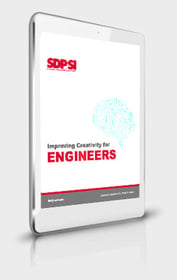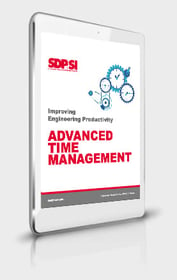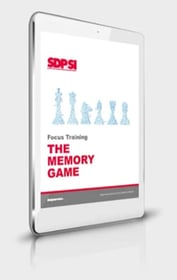Professional Development & Technical Resources

Designatronics is more than just a machine shop, we are a hub of engineering resources. Accurate, informed educational content and technical
guides are a substantial part of our mission in building better engineers and setting innovation into motion.
Careers in engineering and design can be all-consuming, especially when problems arise requiring custom solutions. Access to the right information and tools is critical for engineers and designers to deliver quality results while maintaining a healthy balance between work and everyday living. That’s why we built an online library—for helping our people find all the help they need to succeed.
Bookmark this page for a quick reference to resources designed specifically for engineering fields.
Ranging from technical data on belts and pulleys to techniques for increasing focus and productivity, keep scrolling to access dozens of tactical guides.
 Technical Resources
Technical Resources
Our online resource library is full of technical data on parts. Here’s a basic rundown of popular guides and tools.
Or, download one of our 5 e-books designed to help engineers advance in their careers through personal development tips and techniques.
Skip to Section
Improving Creativity for
Engineers
Download eBook
Improving Engineering Productivity
Download eBook
Mindfulness For
Engineers
Download eBook


Bearings
Learn about precision metal ball bearings and plastic bearings for industrial and commercial applications. Start with an introduction and brief overview of bearing types, and read about selection factors to consider such as loads, bearing reactions, tolerances and clearances, etc.
Check out the design data we have on ball bearings, from lubrication and surface finishes to porous metal and plastic materials. Review these tables to consider which bearing will best fit the application it is intended for, as well as what lubrication is correct and available.

Belts
Our resources on timing belts provide an overview of belt designs along with installation guidelines and operations. GT®3 timing belts offer an improved construction and material compound for superior load bearing capacity; all the information relevant to updates and changes from the GT®2 are listed here. Belt tensioning force and minimum pulley diameter specifications are also listed in easy-to-follow tables.
Belt drives are particularly useful in applications where layout flexibility is important. Belt drives enable the designer to place components in more advantageous locations, find out how...

Belts & Pulleys – Technical Data
Several considerations are listed for more relevant technical data about synchronous drive operations, suggestions for timing belt design and installation, and more detailed information such as durability and tooth jump resistance.
Please see our informational video for a brief overview, and to learn how to use the Designatronics Center Distance Designer Tool. Download our full Timing Belt and Pulley technical section.

Couplings and Universal Joints
Review criteria for power transmission couplings, including types of flexible couplings and application considerations, like torque and HP, shaft misalignment, lateral and axial flexibility of coupling, and backlash.

Gears
We know all about gears, from the history of their conception to modern applications and designs. Our resources and expertise on gears is extensive, including white papers on gear types and manufacturing, planetary gears, and even a case study on how we help customers create unique solutions.
We are proud to offer the many products of Nidec Motion Control.
Established as the world’s leading electric motor manufacturer, Nidec Motion Control provides comprehensive motion control solutions for a diverse range of industries and thousands of demanding applications. Highly recognized for their work in robotics, autonomous mobile robots, warehouse automation, material handling, food and beverage, medical and many other markets, they produce products that drive industry.
Our product offering features high-efficiency motors, gearmotors, gearheads, and controllers for industrial and commercial markets. From an individual motor to a complete package of bundled products we meet our customer’s needs for comprehensive drive systems.
Shopping for parts? Find the right components with the
Cross Reference Guide or Coupling Selector.
 How to Increase Productivity
How to Increase Productivity
Does the day seem to fly by, leaving you frustrated about how little you seem to get done? Like most humans, you are probably being continually bombarded with trivial interruptions. Emails, text messages, phone calls, and the all-engrossing worldwide web are stealing away the minutes throughout your day.
Furthermore, inefficient decision-making hinders productivity on an entirely different level, leading people down “rabbit holes” with no real value at the bottom.
Are you ready to start getting the most out of your working hours? Then, you might need to change a few habits and thinking patterns.
#1 Delete Digital Distractions
Technology, although helpful and efficient at times, can bring productivity to a screeching halt by breaking your concentration and state of mind, called flow. Distractions, like texting, emailing, surfing the web, etc., deteriorate one’s ability to concentrate and focus for long periods of time; and that’s when productivity is at its best, during those lengthy time periods of purely focusing on the task at hand.
Each time you stop focusing and break away from a task to answer an email or check your phone, it takes your brain nearly 20 minutes to return to that same level of focus and concentration. Checking texts, emails, or notifications while trying to problem solve or be creative is robbing you of time and energy. Learn more about digital addiction and taking steps to eliminating distractions.
#2 Make Better Decisions
The second ticket to increasing productivity is learning how to optimize your time by making better decisions. Business is about decision-making, and every decision has an opportunity cost, usually in the form of investments like labor, time, and money.
The art of decision-making is understanding when to analyze and when to act. The old adages sum it up perfectly, “Choose your battles wisely,” and “Don’t try reinventing the wheel.”
Try exploring the concept of “adjacent possibilities” to help you frame problems in a way that allows creativity and new ideas to flow.
Adjacent thinking is based on the idea that building upon what already exists is more viable than creating something new. Rather than striving to be “disruptive” or unique, focus on incremental improvements; small changes are less risky and easier to manage than big advancements.
Another concept to keep in mind when making decisions is “bounded rationality,” a natural, yet constrictive thought process humans use to consciously solve simple problems. However, a better way to address complex issues is to let the unconscious mind do the problem-solving. Harness unconscious thought theory to attack open-ended problems with ingenuity. Good decision-making skills is key to balancing time and value.
#3 Try Productive Meditation
Studies centered around unconscious thought theory are proving that meditation optimize the brain’s ability to solve problems. Productive meditation embraces the idea that while your body is preoccupied with a simple physical activity, your subconscious mind is unraveling ideas. Despite the name, productive meditation isn’t just meant to bump-up productivity. Rather, the practice is defined by its ability to rapidly improve your ability to think deeply. Check out the book, Deep Work, by Cal Newport to read up on productive meditation, or get the fast and furious version in this article.
Download our eBook ![]()
Advanced Time Management...
for more tips and techniques on increasing productivity.
 How to Improve Creative Thinking
How to Improve Creative Thinking
Creativity is the fuel moving science and technology forward. It is the unseen workings of the brain, bridging gap between what exists now and what could exist if we can only solve the next problem. Creativity is the new barrier to entry into any competitive market. In many businesses, competitive advantages are not found in equipment and capital but in the creative minds of their teams.
Improving creativity is like body building—the more you practice, the stronger you become. While muscles build strength from weightlifting, the creative muscle of your mind gets stronger the more it participates in creative thinking. Here are suggestions for keeping the creative juices flowing.
#1 Diet and Exercise
Scientists have known that exercise can prolong life but, until recently, they didn’t know why. Now, science proves that physical exercise alters the rate at which chromosomes “shorten,” extending longevity and reducing the risk of dementia. Not only does exercise promote a longer life, it can actually treat depression, improve memory retention, and reduce inflammation—all factors affecting creative thinking. Learn more about how exercise and diet keep the brain healthy.
That old saying, “you are what you eat,” isn’t too far off. Factors, such as obesity, alcohol consumption, and side effects from prescription drugs can really put a damper on the creative brain by affecting neurotransmitters, the messengers in the brain that send and receive information. When your body doesn’t have enough protein, fats or sugars, neurotransmitters malfunction resulting in “brain drain” or emotional breakdown. Cognitive processes are powered by food, so feed yourself well.
#2 Enhance Your Mind
Creativity isn’t necessarily a “gift” like people often assume. It’s a muscle that can build strength with the proper training and tools. So, if you’re not the “gifted” type, step right up! We have your golden ticket to creativity. Enter your creative mind through the doors of unconscious thought.
Unconscious thought theory describes two types of thinking: the unconscious (a.k.a. subconscious) mind and the logical conscious mind. Science suggests that the unconscious mind is adept at processing very large data sets with multiple variables, connecting disparate ideas in previously unknown ways, something the conscious mind does very poorly.
How does one leverage the power of unconscious thought? Frequent, deep relaxation.
- Prioritize Sleep – Quality sleep is priority, and dreams are good too. This is when your brain is “rewiring” and solving dilemmas. Similarly, deep relaxation rejuvenates the mind’s ability to think outside the box.
- Mindful Meditation – Studies repeatedly report the benefits of meditation, learn about them all in this article.
Creativity and innovation go hand-in-hand—creative thinking is the force behind ingenuity. Luckily, it can be cultivated with healthy living and lots of relaxation.
 How to Advance a Career
How to Advance a Career
Whether you are interested in career advancement or not, learning new skills and nurturing strengths helps build better human beings out of us all. Plus, personal development eventually pays off, serving as an advantage throughout life, even in unforeseen ways. If you want to learn something new, climb the corporate ladder, or just be a better friend and spouse, start with self-reflection.
#1 Invite Learning Experiences
Learning about one’s self is the foundation of sustainable growth. Getting “in touch with your true self” might sound a little too fluffy for your tastes but bear with us here, because if you want to grow your strengths and acquire new skills, you must own confidence.
Confidence in your own beliefs, feelings, and strengths is the engine that is driving your success. Are you fueling up on confidence, or are you standing on the roadside watching others pass by?
Although some lucky people are born and raised exuding confidence (perhaps more than their fair share), most of us have to develop confidence. Building confidence isn’t some weekend retreat, it takes a positive mindset and a willingness to change. True self-confidence is not a destination, it’s a journey.
It’s about learning our strong suits, discovering our innermost desires, coming to terms with weaknesses, and embracing the kind of humility it takes to fail and try again.
#2 Strengthen Soft Skills
Engineers, like people in other professions, have a vested interest in remaining relevant within their fields to sustain good careers. However, the ability to advance a career requires more than having up-to-date technical skills; it requires competence in leadership, communication, and relationship-building. Clearly, technical knowledge is imperative, but “soft skills” are just as important for achieving success.
After all, you still have to deal with people on some level or another: family members, coworkers, vendors, bosses, etc. Put people skills at the top of your priority list and watch your relationships improve dramatically. Don’t know where to begin? Check out this article to start with the basics.
#3 Brain Training
Mentally exhausting activities, like memorization, puzzles, word problems, and math equations activate synapses in the brain, refreshing neurological pathways and creating entirely new ones. But, having the discipline to hash through some of these brain busters isn’t easy.
Brain training techniques are like practice exercises for tapping into the creative mind.
We humans tend to be quite forgetful. Studies show that most people forget 90% of information within seven to 30 days after learning it. Simple tips and techniques can optimize learning and memory recall.
- Repetition – Say it three times out loud or write it down.
- Visualization – “See” the information or thought as an image.
- Association – Connect each piece of information with a personal possession or experience.
- Mnemonics – Develop a framework using acronyms, rhymes, music, and even smells.
- Chunking – Grouping items to find similarities or patterns.
 Practice Leadership
Practice Leadership
As you advance in your career, taking on a leadership role is almost inevitable. Learn about 6 leadership styles and discover where you fit.
All great leaders have 2 things in common, and it's probably not what you think.
Download A Leadership Guide for Engineers
to find out what they are!





